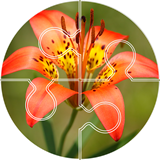Positive and Inclusive Virtual Experience Tips

PLEASE NOTE:
If you are a participant, please watch your email for the instructions on how to join the conference on Thursday morning, Oct 21.
If you are a presenter or moderator, you will receive a unique link in your email for your panel/session.
Welcome to the 6th Life Discovery – Doing Science Education Conference – in a virtual format for the first time.
This page contains tips for a positive and inclusive virtual experience for:
- Participants
- Presenters
- Moderators
Tips for ALL Participants, Presenters, and Moderators
Be Prepared
- Review the full Virtual Program for the upcoming day the night before. Familiarize yourself with the virtual session types. We have large groups and small breakout options.
- Know how to gain access to each session type by locating the Join Now buttons within the virtual program page. These Join Now buttons will appear beneath each session type by clicking on the session titles and revealing the description and zoom link. Please note that the buttons will only appear at the beginning of each conference day and then will be removed after the day is done.
- We are expecting more than 150 participants. To facilitate smooth transitions into breakouts, please decide which panel breakout you would like to join the day before. All descriptions are available here.
- Sign in early so you are not delayed due to lag time.
- For problems or questions, contact ldc@nullesa.org or call 202-833-8773
Tips for Participants
During the Conference Sessions:
Identify Yourself: It’s helpful to establish the practice of presenters, panelists, and all participants to identify themselves by name when they begin speaking. This helps those who can’t see the names for a variety of reasons and helps build community and gives people control over how others pronounce their names.
Using Chat Feature: The chat feature is an alternative way to ask questions and engage based on comfort level, preference, or necessity. Use chat to share resources but refrain from off-topic side conversations.
Participation: Please keep your microphone muted unless called upon to speak. Keep your comments or questions brief. Using the “Take space, make space,” concept, please make space to allow others to “raise their hands” to request the floor if you have already spoken. No one should feel pressured to do anything that makes them feel uncomfortable. Everyone needs to feel they can contribute in their own unique way.
Tips for Presenters / Moderators
- Arrive at your Zoom room at least 10 minutes before your scheduled presentation.
- Ensure that you are in the correct Zoom room.
- We are not able to estimate the number of participants attending your particular presentation, so please be prepared to adapt as needed.
- If there are no assigned moderators for your presentation (e.g. breakouts and Education Share Fair), you will essentially be serving the basic moderator functions.
Preparing Accessible Presentations:
Sharing Resources Ahead of Time: Anything that’s going to be used during your presentation should be available for download on the conference website for people needing accommodations. By providing the information in advance, this will help allow time for things like screen magnification, screen reading, color adjustment, etc. prior to the session. Please consider including text along with pictures on slides, especially if it is necessary to understand a certain concept.
Helpful Tips for Creating Accessible PowerPoints: When creating an accessible PowerPoint keep these tips in mind:
- Use high contrast color schemes (black and white)
- Use color-blind friendly palettes
- Use large fonts
- Keep information displayed on each slide to a minimum
- Use standard slide transitions
- All videos shown should be captioned. Free captioning software is available online.
(tips from ASANet.org and SmashingMazagine.com)
Accessibility Assessment: Prior to sending us your resources, we strongly recommend running accessibility checkers such as:
These tools have not been vetted by ESA and are only presented as an example for your convenience.
Other Valuable Resources:
For more on Neurodiversity Click Here.
For more on Zoom’s Accessibility Visit Here.
For Zoom Keyboard Short-Cuts Read More Here.
For more on Accessibility Click Here.
During the Conference Sessions:
Types of Sessions: Before presenting, clearly state whether your session will be primarily a listening experience or an interactive experience for participants, and when participation will be encouraged and needed to accomplish the goal of the session. This is to ensure individuals will be prepared to participate.
Audience Participation: Do remind your audience to keep microphones muted unless called upon to speak and to keep comments or question brief. Using the “Take space, make space,” concept, ask participants to make space to allow others to “raise their hands” to request the floor if they have already spoken. No one should feel pressured to do anything that makes them uncomfortable. Everyone needs to feel comfortable contributing.
Use of Chat: Norms should be established for use of text chat features. The chat feature is an alternative way to ask questions and engage based on comfort level, preference, or necessity. Encourage participants to use chat to share resources but refrain from off-topic side conversations to allow those with vision disabilities to follow.
Do monitor the text chat for questions/comments/resources that may surface in the chat. Mention those or a representative sample so participants who feel more comfortable in chat will be included.